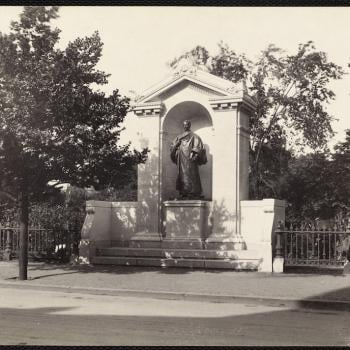Two letters. The first in response to a note from a monastic reader, and then a response to his response…
Dear
I meant to underscore that there is something very powerful going on in the Japanese-derived Bodhisattva ordination. It is another form of practice and service which I think is best characterized as priesthood or ministry.
I am less familiar with the Korean Taego Order which is also an attempt at reforming the monastic system. From the limited resources I’ve been able to find in English they also have the same difficulty in establishing their practice as ministry rather than monasticism. Of course they also suffer from the allegations they collaborated with the Japanese occupation and apparently false charge associated with it that they were in fact simply created by the Japanese Soto priesthood during the occupation.
My point in my “Modest Call” is that I think there is a place for this form of ordination in Buddhism.
And while there are strong historical reasons for this ordination model to be associated with monasticism, it would be wise to shift from identifying this Bodhisattva ordination with Vinaya ordination, and the easiest way would be to eschew monastic language when describing it.
This would avoid much of the confusion that has occurred in the minds of all involved, shift the focus of practice, and allow this new model to flourish, not as a replacement for Vinaya monasticism, nor as a subordinate or inferior ordination to the Vinaya, but as a complementary and genuinely Buddhist ordination with its own gifts for the Dharma.
I hope all is well with you and yours.
Bows,
James
***
Hi
To be clear this model is not lay ministry.
In Japan it derives from a couple of things. In the ninth century when the monastic ordination platforms were controlled by a few monasteries a reformer named Saicho petitioned the government to allow new platforms that would ordain using the Bramajala fifty-eight vows – but with the intention these be full monastic ordinations.
This quickly became the normative ordination model for Japanese Buddhism (over time with some further changes in the actual vows being made. In Zen to sixteen for Soto and ten for Rinzai ordinations.) Continental Buddhists do claim such ordinations are not monastic and those ordained are simply pious lay people dressing up as monks or nuns. But as you said earlier if you dress up as one and you act like one…
Anyway, a second event came to play that shifted this completely. And that was the establishment of many tens of thousands of temples with one or at most two monks in residence. Over time, known mainly through records trying to curb it, many, probably most incumbent monks had concubines.
In the Meiji reformation the reality was recognized and monks were allowed to grow their hair, eat meat, and marry.
My point is that by this time a fully new ministerial model happened, what should no longer be called monasticism, but which is not lay ministry. A principle study of this in English is titled “Neither monk nor layman.”
Part of what annoys those ordained in this model and which has hampered the forward movement of the priesthood dropping the monastic terminology is resistance to the denigration of what is happening from Vinaya monastics.
By the bye, I would hazard in response to your observation about the disappearance of lay ministers in your and other Vinaya temples, in addition to their perhaps setting up shop independently, is that they are second class leaders. At some point being treated that way annoys people.
Fond regards,
Bows,
James













